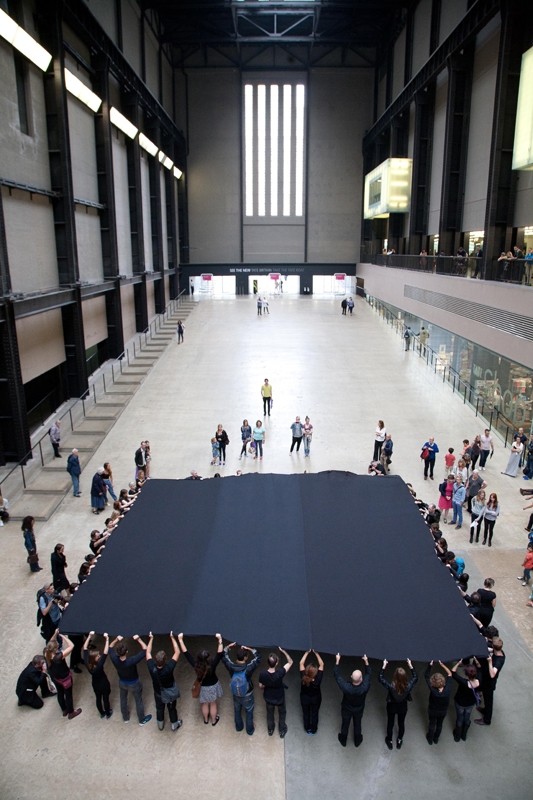This past January, Tate finally divulged the figures of its sponsorship deal with oil giant BP, having lost its appeal of an information tribunal ruling from the previous December. That followed a long campaign by anti-oil protesters against BP’s sponsorship of Tate and other big UK arts institutions. Over 17 years, from 1990 to 2006, as it turned out, BP handed over £3.8m, or on average £224,000 a year, in its sponsorship deal with Tate. Small beer, declared protesters such as Liberate Tate and Platform, who argued that with that kind of sugar daddy, Tate could surely forego the odd quartermillion, compared with the ethical cost of being associated with a big, bad, carbon-spewing, oilspilling monster like BP. Easily enough said if you’re a protester, but as Tate’s public funding has dwindled, maybe the only scandal is that Tate isn’t asking for a lot more from such miserly corporates. After all, if you’re an anti-BP critic, trying to put a price tag on reputational whitewashing is a nonsense – there’s no ethical difference between £1,000 and £1 million – while the argument that Tate could ‘do without’ comes from those who have never had to fundraise.
Tate was of course founded by private, not public philanthropy, its own sugar daddy being the, well, Victorian sugar magnate Henry Tate. Now it is funded and thought of as a ‘public’ institution. The Tate–BP campaign tracks the growing tendency to highlight the financial relationships public cultural institutions have with corporate and other private benefactors. On all kinds of divisive social and political issues, from big oil and climate change to the Israel–Palestine conflict, the involvement of sponsors and patrons deemed by campaigners as unethical is leading to calls for cultural institutions to be more ‘transparent’ about their dealings with private sponsors, and not to hand the latter the reputational credibility that comes with the ‘brand’ of the art museum or public gallery, as ‘PR whitewash’ for their possibly contentious activities in the wider world.
In a fantasy world maybe, every museum, every biennial, would be funded by blameless governments and exemplary corporate sponsors
Indeed, ‘transparency’ has become something of a motif over the last six months. As I noted last October about the anti-Israel artists’ boycott at the São Paulo Bienal, curator Charles Esche and his cocurators were quick to try to turn the campaign against Israeli Consulate funding of the Bienal into a bigger call to scrutinise the sources of their support, demanding, in their public statement, that the Bienal Foundation ‘revise their current rules of sponsorship and ensure that artists and curators agree to any support that is forthcoming for their work and that may have an impact on its content and reception’. Quoted in an article on patronage in the arts in the Financial Times shortly after, Esche reiterated that ‘transparency is essential’, while complaining that ‘so far it’s happening as a struggle rather than a protocol. It needs to become a protocol.’
But should transparency of patronage become an institutional ‘protocol’, simply at the insistence of those campaigners with an axe to grind? The idea of artists and curators demanding a veto on certain sponsors is, at a practical and political level a recipe for intractable disagreement, between institutions, sponsors, curators and artists.
In a fantasy world maybe, every museum, every biennial, would be funded by blameless governments and exemplary corporate sponsors. But in the real world, the demand for transparency is, in part, one of the knock-on effects of the failure of alternative models of institution that thrived on public-sector funding during the last decade. It’s no coincidence that Esche should be preoccupied with the relations of patron to curator. It was he, along with a number of now-prominent curators and theorists such as Maria Lind and Nina Möntmann, who throughout the 2000s led the experiment in a network of European museums and art centres in what has come to be known as ‘New Institutionalism’ – a rethinking of the public art institution that turned it from a showcase for orthodox forms of artistic presentation into a site for socially engaged experimentation – ‘part community centre, part laboratory, part school’, as Esche put it in an interview for the journal oncurating.org last year. What finally undid institutions such as Esche’s Rooseum in Malmö, though, were the hostile interventions of politicians and the heavy cuts in public subsidy that progressively closed down the possibility of such experimental spaces.
Demands for ‘transparency’ are a reaction to the perceived corporatisation of large institutions, as the opportunities for artistic and curatorial practice outside ‘the market’ and the publicly funded mainstream dwindle
Those problems aren’t going away, and demands for ‘transparency’ are a reaction to the perceived corporatisation of large institutions, as the opportunities for artistic and curatorial practice outside ‘the market’ and the publicly funded mainstream dwindle. They reflect the frustrations of artists and curators who have come to see artistic practice as political intervention – ‘a device to install other forms of democracy than the ones we had’, as Esche put it in the same interview – while having become career-dependent on public patronage in order to do so.
Demanding that big institutions conform to possibly unattainable ethical standards suggests that many artists and curators have given up on making their own spaces, their own networks, even creating their own institutions, becoming fixated instead on berating the shortcomings of the existing structures. Art, conceived as nothing more than a form of social activism, will want to fight these battles. But therein lies a serious question: does contemporary art do anything that is valuable or significant for its public, valuable or significant enough that it might be worth the inevitable conflicts and compromises of its patronage? Maybe it doesn’t. But if it doesn’t, then the only options left to curators and artists might be to abolish those institutions, or abandon them.
This article was first published in the April 2015 issue.
